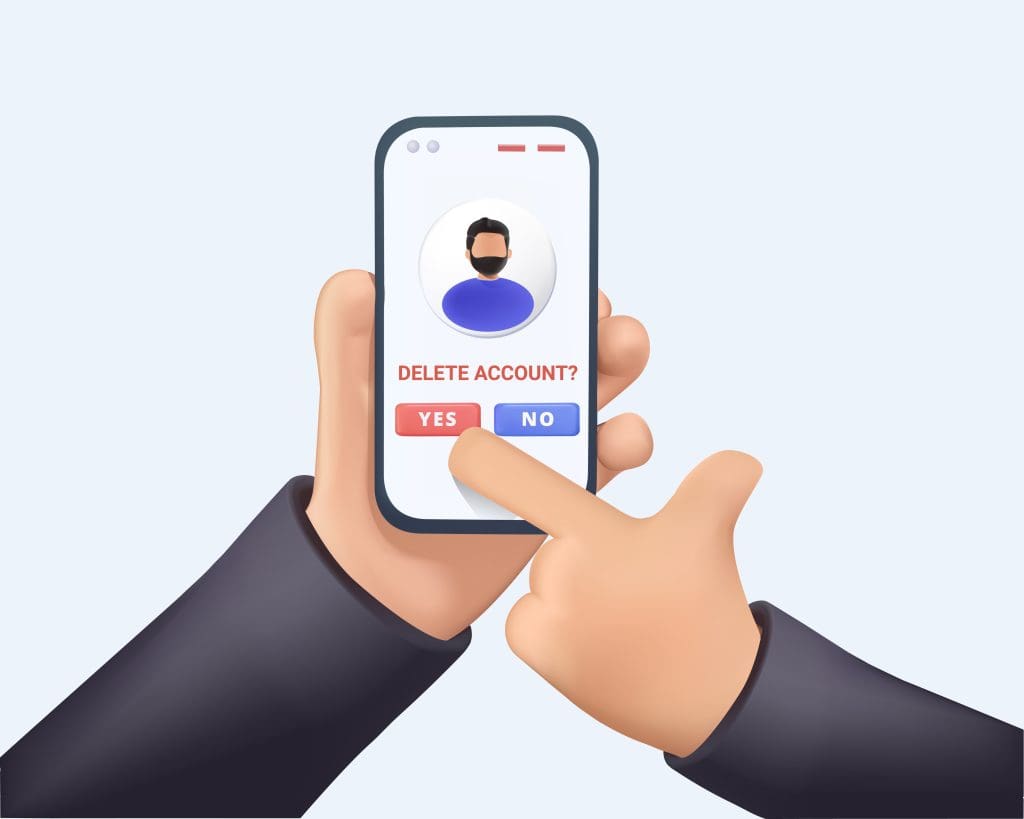How To Remove Search Results From Google: A Comprehensive Tutorial

In this article, we’ll discuss a few ways to remove search results from Google so you can take back control of your online reputation.
In today’s digital age, online presence plays a significant role in shaping your personal or business reputation. But what happens when unwanted or harmful information appears in Google search results?
Negative search results can lead to lost opportunities, damaged relationships, and decreased trust from potential clients or employers. Taking control of what shows up on search engines is crucial. Why? It directly impacts your online reputation.
How To Remove Google Search Results: Key Takeaways
- Understand why someone would want to remove results from Google. This includes personal information, outdated or irrelevant information, and inaccurate or defamatory content.
- Know how to remove content from Google. This includes contacting website owners, submitting a legal removal request, and utilizing Google’s removal tool.
- Take proactive steps to monitor and maintain clean search results. For example, regularly check for new results and use ORM tools.
Let’s get into it!
What Does It Mean to Remove Google Search Results?

Removing Google search results means eliminating specific web pages or content from appearing in search engine results generated by Google.
In terms of online reputation management, having certain content removed from Google search results can significantly impact an individual’s or business’ online perception. Such Google search results content can tarnish a reputation and hinder growth opportunities. Damaging content includes a negative review, outdated information, and sensitive personal data.
Imagine a scenario where a small business faces false accusations online that damage its credibility. By removing these harmful Google search results, the business can safeguard its reputation and regain the trust of potential customers.
Why Would Someone Want to Remove Google Search Results?
Individuals or businesses may seek to remove Google search results due to the presence of unwanted, negative, or damaging content that can harm their online reputation and visibility.
By actively managing Google search results, one can ensure that accurate and positive information is displayed prominently. In turn, this creates a more favorable image. This involves a strategic approach to online reputation management, including monitoring, responding to feedback, and optimizing content to boost visibility.
Personal Information

Removing personal information from Google involves finding the web results with your data, contacting the site owner and submitting a request to remove content in order to safeguard one’s privacy and data.
In terms of protecting your personal information online, taking proactive steps to monitor and remove Google search results is crucial. To start the process, do the following:
- Locate the website or websites where the information is hosted.
- Once you have identified the website with the harmful Google search results, look for contact information for the site owner or administrator.
- Approach the contact politely and professionally to increase the chances of getting a positive response.
- Craft a clear and concise request explaining why you want the site manager to remove content or remove pages. Provide any necessary supporting documents or evidence that could help your case, like a court order or other legal reasons.
Do you need help with your digital presence or removing Google search results? Call us at (844) 458-6735 for an in-depth audit and valuable insights from an expert.
Outdated or Irrelevant Information
Keeping your online presence up-to-date is vital in today’s fast-paced digital landscape. By removing outdated content, you enhance your website’s credibility and improve the user experience.
Eliminating outdated or irrelevant information from Google Search requires utilizing tools like Google’s outdated content tool to identify and address obsolete web results and pages.
Google’s outdated content tool is a valuable resource that helps website owners locate and eliminate obsolete pages and Google search results that no longer serve a purpose. It allows you to manage your online footprint efficiently. This ensures that only relevant and accurate information is displayed to users searching for your brand or business.
Inaccurate or Defamatory Content

Dealing with inaccurate or defamatory content in Google may involve taking legal action against the source to address false allegations and protect one’s reputation.
Companies and individuals face significant challenges when misinformation or malicious and harmful content tarnishes their online image via Google’s search results. Such content can damage a person’s credibility, harm relationships, and impact business opportunities.
Legal recourse becomes crucial to combat false claims and seek justice. Individuals can seek remedies by initiating legal proceedings against those responsible for spreading defamatory material, including removal of the offending content and possible compensation for damages caused.
How To Remove Google’s Search Results

Removing Google search results can be achieved by contacting the site owner or using Google’s tool to have a search result removed. Let’s get into the top strategies for removing Google search results.
Contact the Website Owner
Initiating contact with the website owner is a crucial step in the removal process to address issues related to identity theft, personal information, or unwanted content.
When contacting website owners for content removal, it’s essential to communicate clearly and concisely. Start by identifying yourself and explaining the specific content or personal information that needs to be taken down. Providing URLs and detailed descriptions of explicit content can streamline the process for the owner and increase the chances of a timely response.
While crafting your request, remember to maintain a professional tone and highlight the ethical or legal reasons behind your appeal. Clearly outline the potential consequences of non-compliance and offer to collaborate in swiftly resolving the issue.
It’s smart to take a proactive approach when addressing your personal information concerns with website owners. You’ll protect your privacy and foster a productive dialogue.
Submit a Legal Removal Request
Submitting a legal removal request is necessary when dealing with defamatory or legally infringing content on Google Search.
When submitting such requests, individuals or entities need to follow specific procedures outlined by platforms like Google to remove content. The Digital Millennium Copyright Act plays a crucial role in content removal by providing a legal framework for copyright owners to protect their intellectual property online.
By understanding the provisions of the DMCA and other relevant laws, individuals can navigate the complexities of online content removal efficiently. It is essential to consult with legal experts to ensure that the removal requests comply with legal standards and processes. Doing so safeguards against potential legal repercussions.
Use Google’s Removal Tool
Utilizing Google’s tool for removing web results offers a streamlined solution to remove content. In turn, the tool enables individuals and businesses to manage their online presence.
Using this tool, individuals can request that Google remove content like specific URLs or images that could harm their reputation or violate their privacy.
Google’s tool enables users to address outdated or sensitive information that may no longer be relevant and ensure that their web presence includes only accurate and appropriate content.
The tool serves as a valuable resource for maintaining a polished search appearance by swiftly targeting and eliminating undesirable material from Google search results.
What Types of Google Search Results Can Be Removed?

Content that can be removed from Google search results includes:
- Personal information
- Instances of copyright infringement
- Materials containing defamatory or inaccurate content
Regarding personal information, Google typically considers requests for removal if the data includes sensitive details like ID numbers, financial information, or contact details. Any content that violates intellectual property rights may be subject to removal in the case of copyright issues. This can encompass unauthorized use of text, images, videos, or other creative works.
Regarding defamatory or inaccurate material, Google aims to balance freedom of expression and protecting individuals from harm. Content that spreads false information, harmful allegations, or malicious intent may be eligible for removal to safeguard the reputation and well-being of individuals or entities.
Personal Information
Personal data that qualifies for removal includes sensitive information such as:
- Social security numbers
- Financial details
- Medical records
- Home addresses
- Personal contact information
Protecting sensitive information online has become increasingly crucial in the digital age as cyber threats and privacy concerns continue to rise. Individuals must take proactive steps to shield their personal data from falling into the wrong hands.
Copyright Infringement

Addressing instances of copyright infringement on Google Search necessitates compliance with legal procedures and frameworks like the DMCA to protect intellectual property rights.
When unauthorized use of copyrighted material is discovered online, it can harm the original creator or owner. This can result in everything from reputational damage to financial losses. Copyright infringement can also impact search engine rankings as search algorithms prioritize authentic and original content.
In such cases, submitting a DMCA complaint to remove infringing content from Google search results is crucial to safeguarding your work. The process involves:
- Identifying the infringing material
- Providing proof of ownership
- Submitting a formal request to Google and other search engines for removal
Proactive measures such as watermarking images, disabling right-click downloads, and regularly monitoring online content can help deter potential infringement and protect your creative endeavors.
Defamatory or Inaccurate Content
Dealing with defamatory or inaccurate content in Google search results may require legal action or reputation management strategies to address false claims and protect one’s online image.
One of the biggest challenges individuals and businesses face when dealing with defamatory or inaccurate content online is the potential damage it can cause to their reputation. In a digital age where information spreads rapidly, false allegations can tarnish someone’s credibility and impact their relationships with customers, partners, and the public.
Effective reputation management techniques involve closely monitoring online mentions, addressing negative content promptly, and engaging positively with audiences to counteract the damaging effects of misinformation. Utilizing search engine optimization (SEO) strategies to promote positive content can also help push down negative search results and enhance one’s online reputation.
Don’t wait — get started today with online reputation management or repair. Give us a call at (844) 458-6735 to learn more.
When facing persistent online attacks or malicious content, some individuals or businesses opt for legal action to protect their rights and seek redress. Pursuing defamation lawsuits, sending cease-and-desist letters, or filing removal requests with search engines or website hosts are common legal strategies to combat harmful online material and restore one’s damaged reputation.
What Are the Steps for Submitting a Legal Removal Request?
Submitting a legal removal request involves:
- Identifying the infringing content
- Gathering evidence of a violation
- Submitting a formal request to Google and/or the website owner
In the initial stage of the process, it is crucial to carefully identify the material that infringes upon your rights, whether it involves copyright infringement, trademark violations, or harm to your reputation. It is essential to pinpoint the specific URLs or locations of the infringing material to include in your submission.
Collecting evidence is a vital step in the submission process. This evidence can take various forms, such as screenshots, the original page where the information first appeared, and any correspondence supporting your infringement claim. Including detailed documentation strengthens your case to have the search result removed.
1. Identify the Content to Be Removed

The initial step in submitting a legal removal request is to accurately identify the content or web page that violates legal grounds or poses reputational or financial harm.
Identifying infringing content accurately is crucial to ensure the removal request is valid and legally sound.
Legal reasons that justify content-takedown requests include:
- Copyright infringement
- Trademark violations
- Financial fraud
- Defamation
- Privacy breaches
By understanding these legal grounds, individuals and businesses can take appropriate action to protect their rights and reputations.
2. Gather Evidence of the Violation
Collecting content infringement or violation evidence is essential to support the legality of removal requests and substantiate claims of harm or misuse.
Without proper evidence, legal removal actions lack the necessary foundation to succeed. By gathering various types of evidence, such as screenshots, web archives, or witness statements, individuals or entities can bolster their case when seeking to have objectionable content removed.
For instance, presenting timestamps, original content, or registration documentation in copyright violation cases can be crucial in justifying a removal request. In cases of hate speech or cyberbullying, collecting copies of harmful messages, bad reviews or negative comments becomes paramount to demonstrate the need for intervention.
3. Submit a Legal Removal Request to Google

Submitting a legal removal request to Google involves providing detailed information about the infringing content and the legal reasons for its removal.
When submitting a request for content removal to Google, you must provide relevant documentation to support your claim. Google typically requires proof of ownership of the copyrighted material being infringed upon, valid legal grounds for removal (such as copyright infringement or privacy violation), and information about the specific URLs hosting the disputed material.
How Long Does It Take for Google Search Results to Be Removed?

The timeframe for Google search results to be removed varies depending on factors such as:
- The nature of the content
- The validity of the removal request
- Google’s processing timeline
Some requests are resolved within a few days, while others may take a few weeks to complete.
Web results with sensitive or personal information that poses a risk to individuals are typically prioritized for removal. Valid removal requests that comply with Google’s policies and legal requirements tend to expedite the removal process, too.
In cases where the removal request is complex or requires further review, the timeline for removal can be extended.
What Happens If the Request Is Denied?

What if Google doesn’t approve your request to remove content? You may have the option to appeal the decision or explore legal recourse.
To appeal Google’s decision, you may have to submit a detailed explanation of why you want the web results removed and provide additional evidence to support the request, hoping to convince Google to reverse its decision.
It is crucial to follow all the guidelines and procedures Google outlines to increase the chances of a successful appeal.
What about cases where appeals are unsuccessful or if the situation escalates? Seeking legal advice may be necessary. Legal options can include pursuing litigation against the source of the content, filing defamation lawsuits, or consulting with legal professionals specializing in Internet law and privacy issues.
How To Monitor and Maintain Positive Google Search Results

Monitoring and maintaining clean search results involves regularly checking for new content, utilizing reputation management tools, and being mindful of one’s negative online content and presence.
One crucial aspect of effective search result monitoring is setting up Google Alerts to receive notifications whenever new mentions or content related to your brand appears in Google search results. By proactively staying updated on search engine results, you can quickly address any negative feedback or misinformation that may harm your online reputation.
Engaging with your audience on social media platforms and review sites can also help foster a positive image and demonstrate your commitment to customer satisfaction. It’s essential to respond promptly to both positive reviews and negative feedback. This shows that you value and acknowledge customer input.
Here are a few more tips for improving the web results for your name:
Regularly Check for New Web Results
Frequent monitoring of search results is essential to stay updated on new content, address emerging issues, and maintain a favorable online presence.
By staying proactive in monitoring search results, individuals and businesses can effectively manage their online reputation. You can also promptly respond to any negative feedback or misinformation that may arise.
From 24-hour monitoring to upscale content creation and promotion, our team of ORM experts can help you create the online presence you deserve. Contact us at (844) 458-6735 for more information.
Utilize Online Reputation Management Tools

Leveraging online reputation management tools can help website owners monitor search results, address issues, and maintain a positive digital presence.
By utilizing such tools, individuals and businesses can gain valuable insights into how they are perceived online. These platforms track mentions and reviews and provide analytics to understand audience sentiment.
Be Mindful of Your Online Presence
Maintaining a positive online presence involves optimizing content for search engines, engaging in ethical SEO practices, and actively managing one’s digital footprint to enhance visibility.
A strong online presence is crucial in today’s digital landscape. Potential clients and employers often form their first impressions through online searches. By implementing effective search engine optimization strategies, individuals can ensure their profiles and websites rank higher in search engine results. This makes them more discoverable to their target audience.
By regularly monitoring and updating online profiles, incorporating relevant keywords, and creating high-quality, engaging content, individuals can establish credibility and authority within their respective industries.
Frequently Asked Questions
How can I determine which results to remove from Google search?
You can start by searching for your name or business on Google and identifying any results that are no longer relevant or accurate. You can also use the Search Tools option to filter results by date and see if there are any outdated results.
Can I remove any content I want from Google Search?
Certain types of content cannot be removed from Google searches, such as government or legal documents, news articles, and public records. However, you can still take steps to either delete that content or minimize its visibility.
What are some tips for preventing unwanted results from appearing on Google searches in the future?
You can regularly monitor your online presence and request to remove any outdated or inaccurate information. Additionally, you can actively manage your online reputation by creating positive and relevant content. Regularly updating your profiles on social media and professional networking sites will help, too.
Contact Us for More Help and Advice

At ReputationSciences.com, we work with clients who need to repair their digital reputation. Whether you’re prioritizing your personal or professional online reputation, our team of experts and tailored services can help.
Through our parent company, NetReputation, we offer a range of ORM services, including ad management, local SEO, review monitoring, content removal and more.
Contact us today at (844) 458-6735 to learn more.
